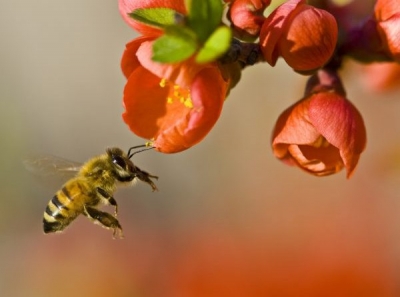
Pollination is the process of propagating life. This is a common phenomenon among all seed-bearing plants. In this process, pollen found on the stamen is transferred to the pistils so that seeds can form.
How are pollen transferred? Often, the wind carries them to the pistils. They can be transferred by raindrops falling on the flower too. However, mostly pollination happens through insects and small animals that frequent flowers. They are called pollinators; and the process of transfer of pollen by the help of these insects or animals is known as pollination.
You must have seen honeybees and butterflies on flowers. They not only fill themselves with the nectar of the flowers, but also pollinate them. Honeybees are said to be the best pollinators. Beetles, wasps and butterflies are also known pollinators. Some small birds such as humming birds and topical bats help in pollination too.
Now, the bright colours of flowers help in this regard. The purpose of flowers is to attract insects and animals to it. Insects find blue, red, purple, violet and many other brightly coloured flowers attractive and go to them. Not all insects are attracted to the same colour though. That is the reason for the variety and beauty in nature.
When an insect sits in a flower for nectar, pollen grains are stuck to its body. It carries this pollen to others flowers when it visits them. When the pollen settles in pistils, the egg cells in the pistil are fertilized and seeds begin to form. New plants will grow from these seeds and life will go on.
Picture Credit : Google
